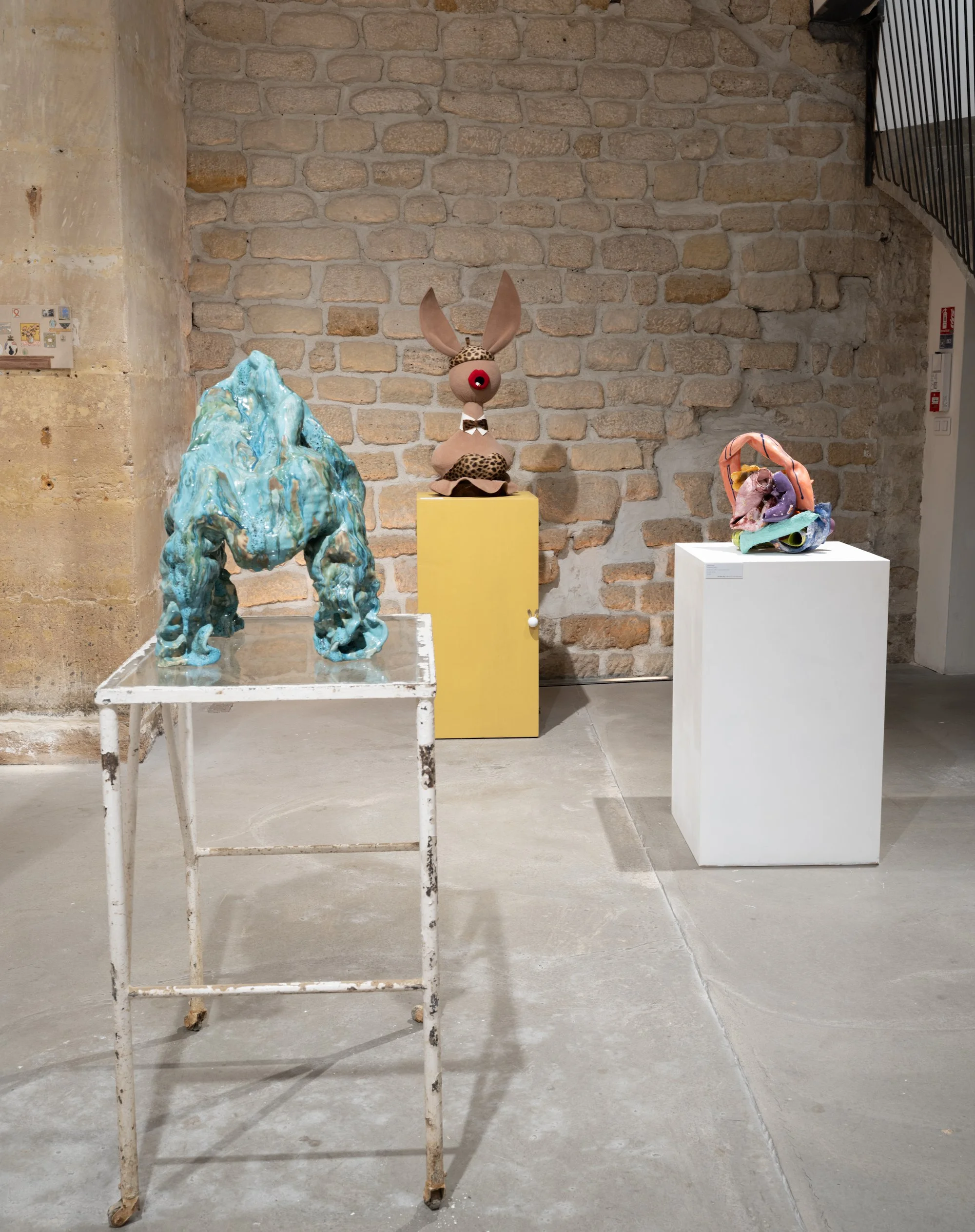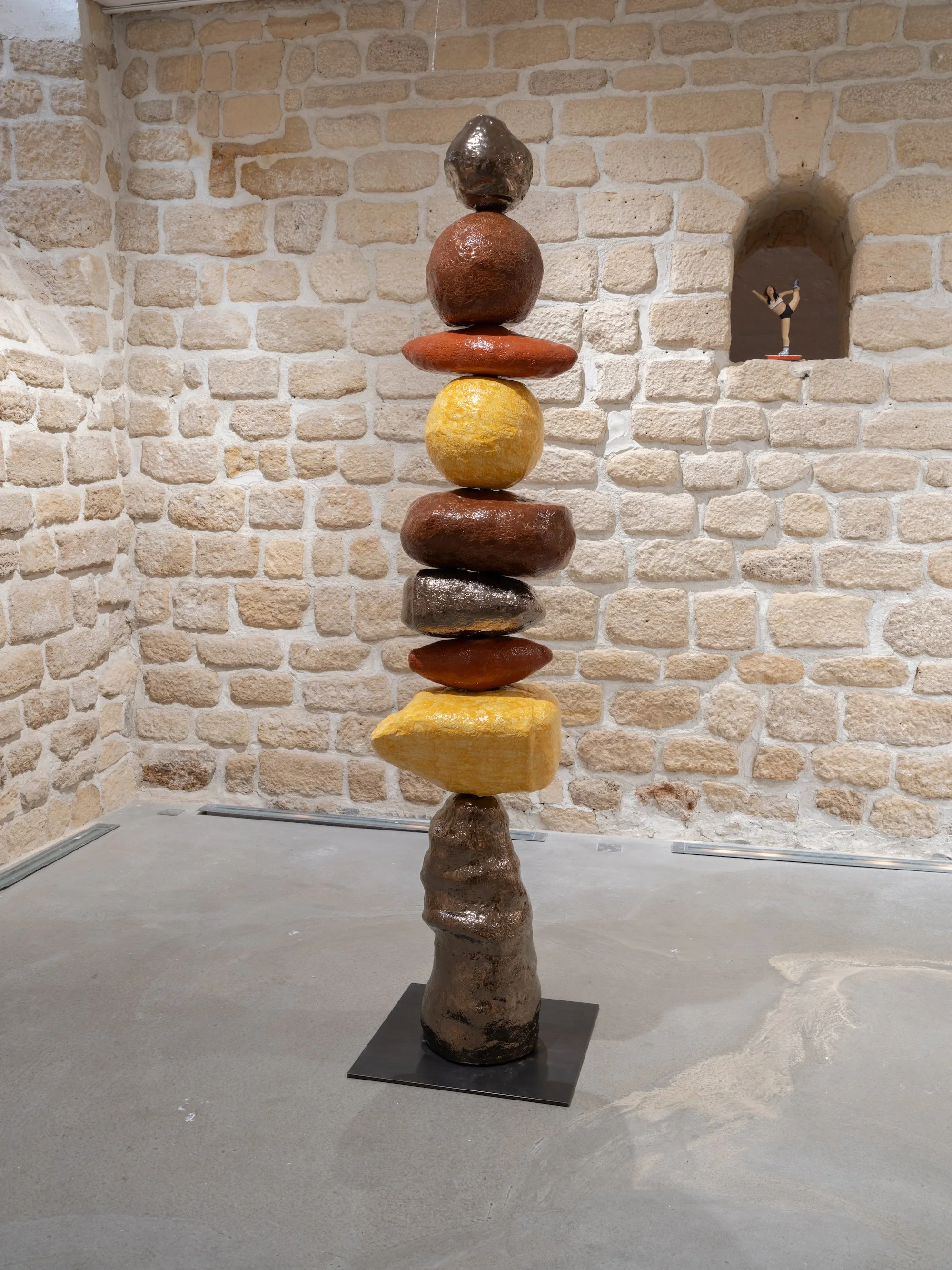The Return of Art School Cool: Inside 7 Rue Froissart
Last week in Paris, 7 Rue Froissart was presented in the style of a traditional art fair, with white walls and a traditional hang. All this, however, was conceptual camouflage. Though on the surface it may have looked conventional, 7 Rue Froissart is anything but. The fair’s very model disrupts the traditional economics of artistic access, with a strong emphasis on relationship-building as cultural praxis.
Brigitte Mulholland opened up her eponymous gallery in Paris just last year, and this year, she has started an art fair of her own. It was relationships that Mulholland had built over the last twenty-odd years in the art world that then rallied around her when the time came to propose an alternative art fair model. Rob Dimin (DIMIN) and Mulholland know each other from New York, so, as Dimin tells it, “When Brigitte decided to do this, it was really a no-brainer for me to want to be involved.” Ingrid Lundgren (Slip House) had already known Mulholland for years when in 2023 they worked on a pop-up exhibition in Paris, Ravens and Crows, together—it was on that same trip that Mulholland found the space that would become her gallery. Mulholland’s long-cultivated network drew in local performance artists such as Mariana Hahn and Kahlos Éphémère, as well as exhibitors from London, New York, Berlin, and Los Angeles. Therefore, 7 Rue Froissart, from its inception, was defined not by its location but instead by its community mandate.
Brigitte Mulholland says, “Art fairs at this point just want your list. So I thought, what if I got a bunch of people together and we combined our lists? The art world is built on relationships, and that’s really important; you have to keep your promises. The only rule I had was that only nice people were allowed.”
7 Rue Froissart began with a promise to artist Raphaëlle Bertran of a solo booth at NADA, which led Mulholland to find an alternative solution when the announcement came in July that the fair would not be returning to Paris. Mulholland scouted out the scene, got intel on the ground in New York City from gallerist Sara Maria Salamone (Mrs.), and found the perfect location in Paris in the heart of the Marais. Within a matter of weeks, everything was coming together. Salamone designed the logo with the help of her graphic designer partner, taking inspiration from the iconic blue Parisian street signs. Mulholland was on the ground in Paris, touring locations, securing insurance, and building and painting walls.
It’s not only a collaborative spirit amongst exhibitors that defines the fair, but a model that weaves accessibility into the fabric of the fair for both exhibitors and visitors. Instead of focusing on profit, the goal for Mulholland was to get the fair operational: no timed entry, no entry tiers, no ticket costs, no astronomical booth fees. To this end, Mulholland put collective affordability and a supportive atmosphere at the core of 7 Rue Froissart’s model: “Galleries are free and open to the public, so I don’t see why a fair like this shouldn’t be. It’s a tight presentation. Everyone brought a really good level of work. It’s just easier for people to engage with it.”
A smaller fair meant financial risk was replaced by a shared vision. Exhibitors all paid the same fee, booth size is roughly equal, and there’s even a shared sculpture space downstairs, which the galleries curated collaboratively. For galleries like HESSE FLATOW, it was an opportunity to gain international visibility and create relationships with less risk. Larger art fairs often come with prohibitive costs charged to galleries, where everything from an extra spotlight to an outlet is charged at a premium; galleries are nickel-and-dimed and often left feeling that they are fending for themselves. Francesa Pessarelli, Associate Director at HESSE FLATOW, says, “I like this. This new model excites me. Of course, we still want to do larger fairs, but everything is getting reconsidered in a time like this. When there’s an option to do something that yields similar or better results and feels a lot better and costs a lot less, I’m all for that.”
Eamonn Maxwell (The Black Chip) never considered showing at an art fair before, but his curiosity piqued when he heard about 7 Rue Froissart: “I’m a naturally curious creature. For me, it’s about what’s on the horizon, what’s possible, what’s interesting and different. I’m driven by artists and what artists need. In Ireland, there are not enough collectors or sales. I’ve been working out ways to show the work internationally.” His booth showcases five Irish artists, marking the first art fair showing of artists such as Sophie Gough. Aubrey Higgin’s Chilli began in 2021 as a nomadic artist-run space, so participation in 7 Rue Froissart was a logical choice in alignment with the space’s roots. The artist he’s showing, Morgane Ely, is Parisian, and he jumped at the special opportunity to show in her hometown.
At 7 Rue Froissart, the social spectacle of the art fair was traded for genuine engagement. Dialogue became the main event. There was time for meaningful in-depth conversations with collectors, advisors, and, most remarkably, artists. The fact that so many artists attended the fair is the highest possible testament to the environment that 7 Rue Froissart created. Robert Dimin says, “The intimacy of scale allows us to have one-to-one conversations in really great ways . . . [T]here’s genuine curiosity about how the works are being made. They're asking real questions about how the works are being made. They’re looking at the work of Justine Hill or the work of Stephen Thorpe and asking what’s going on here.”
Though Paris has long held a reputation as a city that sparks creativity, in recent years, especially due to the geopolitical shockwaves of Brexit and the debut of Art Basel Paris in 2022, the city has become the unofficial capital of the European art world. Other alternative and collaborative fairs, like Chris Sharp’s Place des Vosges, which had its second edition this year, have had success in the city. These smaller fairs are a breath of fresh air and a glimpse into the kinds of communities that can be built in the art world when artists are placed at the forefront.
Radical accessibility is 7 Rue Froissart’s central artistic thesis. “There’s a bit of an anarchic undercurrent,” says Maxwell. “There’s a really cool kind of art school vibe. We’re all showing the work of artists we love.”
7 Rue Froissart was on view from October 20th to October 25th, 2025.





